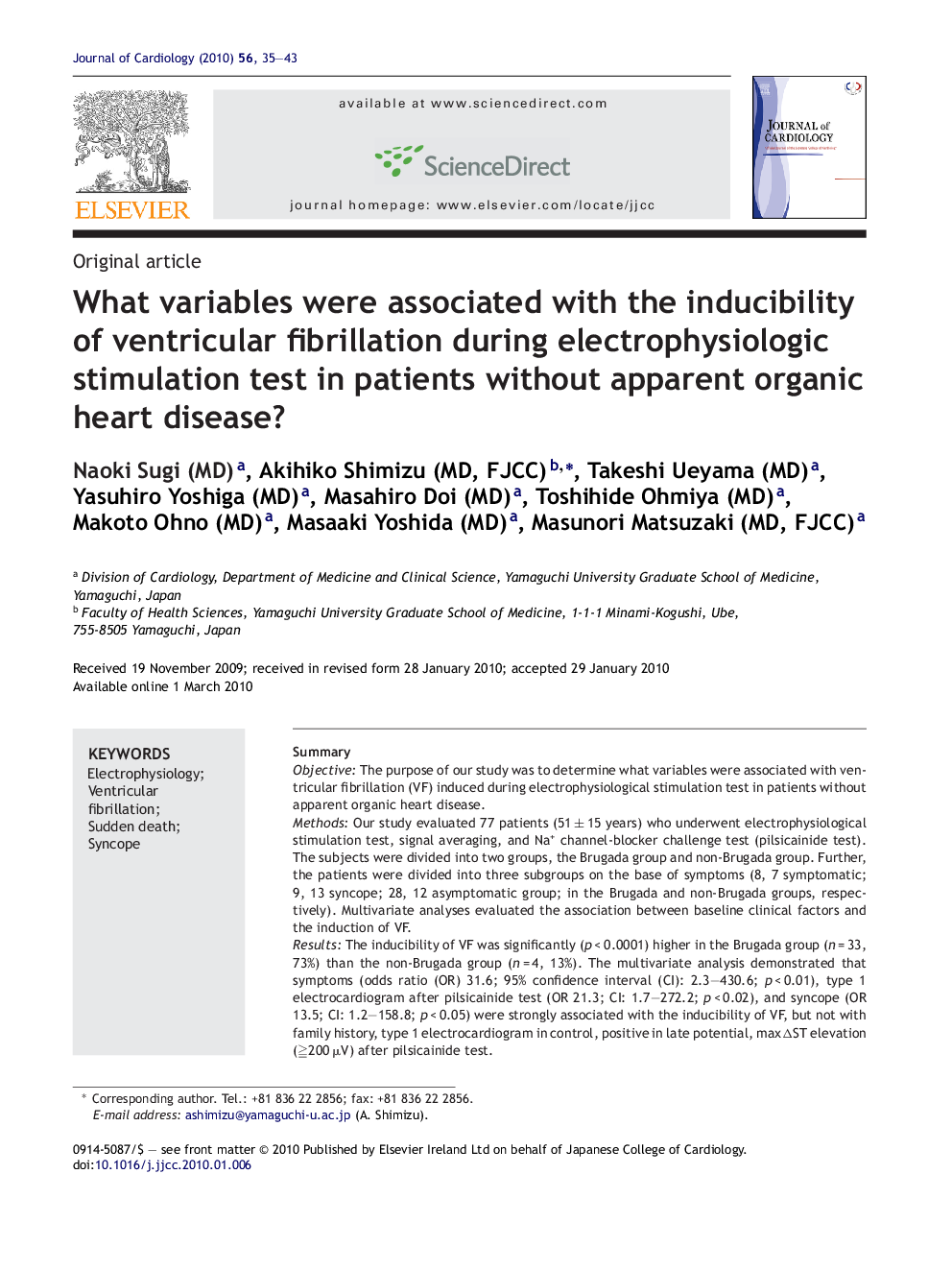| Article ID | Journal | Published Year | Pages | File Type |
|---|---|---|---|---|
| 2963613 | Journal of Cardiology | 2010 | 9 Pages |
SummaryObjectiveThe purpose of our study was to determine what variables were associated with ventricular fibrillation (VF) induced during electrophysiological stimulation test in patients without apparent organic heart disease.MethodsOur study evaluated 77 patients (51 ± 15 years) who underwent electrophysiological stimulation test, signal averaging, and Na+ channel-blocker challenge test (pilsicainide test). The subjects were divided into two groups, the Brugada group and non-Brugada group. Further, the patients were divided into three subgroups on the base of symptoms (8, 7 symptomatic; 9, 13 syncope; 28, 12 asymptomatic group; in the Brugada and non-Brugada groups, respectively). Multivariate analyses evaluated the association between baseline clinical factors and the induction of VF.ResultsThe inducibility of VF was significantly (p < 0.0001) higher in the Brugada group (n = 33, 73%) than the non-Brugada group (n = 4, 13%). The multivariate analysis demonstrated that symptoms (odds ratio (OR) 31.6; 95% confidence interval (CI): 2.3–430.6; p < 0.01), type 1 electrocardiogram after pilsicainide test (OR 21.3; CI: 1.7–272.2; p < 0.02), and syncope (OR 13.5; CI: 1.2–158.8; p < 0.05) were strongly associated with the inducibility of VF, but not with family history, type 1 electrocardiogram in control, positive in late potential, maxΔST elevation (≧200 μV) after pilsicainide test.ConclusionsThe symptoms, syncope, and type 1 electrocardiogram after pilsicainide test were independently associated with the electrophysiological substrate of VF in patients without apparent heart disease.
